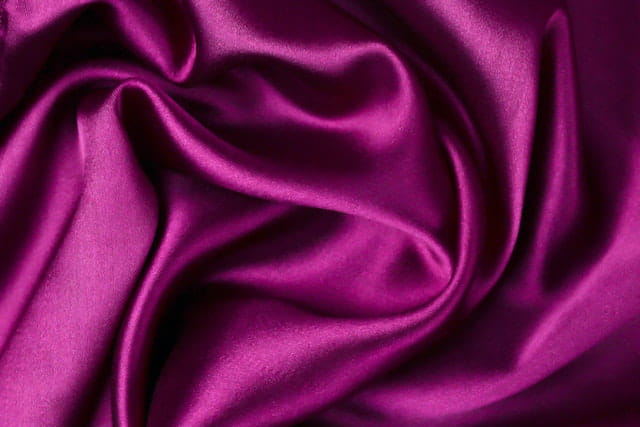Is there a difference between purple and magenta (purple vs magenta)?
Colours beautify and decorate items we use in our everyday lives. Although some colours are chosen for a specific purpose- such as to reflect or absorb heat, various shades are used for home décor, clothing and other purposes.
Purple and magenta are colours we will be discussing in this article. Understanding the difference between these two hues is important, especially if you intend to design your project with a similar colour.
We are all familiar that purple is a colour that is a dark blend of red and blue but magenta is a light purple, purplish-red or pinkish purple colour. Both hues are obtained by mixing red and blue.

Definition of Purple
Purple is a colour that is a dark blend of the colours red and blue. It’s a colour that appears similar to violet light.
Purple is a secondary colour formed by mixing red and blue pigments in various proportions. Historically, purple is used in the arts in the RYB colour model.
In the CMYK colour model used in printing, the colour purple is formed by combining magenta pigment. This is done by combining magenta pigment with either black pigment or cyan pigment or both.
In the RGB colour model used in TV and computer screens, the colour purple is created, mixing blue light and red. This creates colours that appear similar to violet light on the screen.
Purple was a rare colour centuries ago. It’s a colour that has long been associated with royalty and it’s not very common as a colour found in flags of countries.
Only the flag of the Dominican Republic, El Salvador, and Nicaragua has the colour purple in it.
Purple as a colour was rare and the Tyrian purple dye, originally made from the secretions of seas snails was quite expensive. This colour was once worn by Roman magistrates.
It also became the imperial colour donned by the rulers of the Byzantine Empire and the Holy Roman Empire. Purple was also the chosen colour for Roman Catholic bishops.
Also Read: Royal Blue vs Navy Blue: Difference and Comparison
Purple vs Magenta: Etymology of Purple
According to Wikipedia, the modern English term “purple” is from the Old English word “Purpul”. The Old English term “purpul” is derived from the Latin word “Purpura” which is also derived from the Greek πορφύρα (porphura).
Definition of Magenta
The English dictionary defines the term “magenta” as a light purple, purplish-red or pinkish-purple colour created by mixing red and blue light.
It’s a colour that mainly falls between red and purple on the colour spectrum. Magenta is one of the four colours of ink generally used in colour printing with cyan, black, and yellow to create all other colours.
The printer’s magenta is a tone of magenta widely used in printing. The printer’s magenta is redder than the magenta of the RGB model.
The name magenta was taken from an aniline dye made and patterned by a French chemist Francois-Emmanuel Verguin in 1859. Verguin initially called the colour “fuchsine”.
But it was also renamed in 1859 to celebrate the victory of the Italian-French at the battle of Magenta.
By 1860, a virtually identical colour known as roseine was created by British chemists, George Maule and Edward Chambers Nicholson.

Purple vs Magenta: Magenta in Optics and Science
Magenta is a colour that mainly falls between red and purple on the colour spectrum- an extra-spectral colour. As an extra-spectral colour, it means that magenta is not a hue associated with monochromatic visible light.
Instead, magenta is a colour associated with the perception of spectral power distribution which is mainly concentrated in two bands i.e. longer wavelength reddish components and shorter wavelength bluish components.
Magenta is a secondary colour created by mixing equal amounts of red and blue light. In the RGB colour system, the hue is used to make all the colours on the TV or computer screen.
In the CMYK colour model, magenta is used in printing. The hue is one of the three primary colours (others being cyan and yellow) used in printing all the other colours.
If magenta and other primary colours (cyan and yellow) are printed on top of each other on a page, the result will be black. But if magenta and green ink are mixed together, it will look dark grey or black.
Magenta used in colour printing has a darker shade compared to the hue used on computer display screens.
Also Read: Ginger vs Redhead: Difference and Comparison
Purple vs Magenta: How to Use Purple and Magenta in Sentences
Purple and magenta may appear as similar colours, but there is a difference between the two hues.
Using the Term Purple in Sentences
Here are a few examples of sentences with the term “purple”.
- The bishop wore a purple cassock to the annual convention
- Johnson wore a tie that had a shade of bright purple
- Jennifer added purple eye shadow to complete her make-up
- Laura painted her bedroom walls with a shade of purple
- The butterflies were attracted by the purple flowers in the garden
- The Native American tribe wore serapes that had a pattern of purple and yellow stripes
- Mathew decided to wear a purple suit to prom
- The purple gemstone on the bracelet sparkled in the light
- She wore a purple dress to the gala night as a sign of royalty
- The prince gifted his loyal servant a purple
Also Read: Blueprint vs Schematic: Difference and Comparison
Using the Term Magenta in Sentences
Here are a few examples of sentences with the term “magenta”.
- The colour of the samples changed to different shades of pale pink and magenta
- This printing process produces 124 shades for each of three dye colours, magenta, cyan, and black
- Adding more colour made the sample appear magenta in colour
- The 52-inch love seat from Hearth Song shines in lime green or magenta
- Elegant colours can range from reserve deep tan to a fine magenta
- You have the option to choose from colours like lime green, red, royal blue, and magenta
- If you would love a vibrant pattern, I suggest you choose a dark floral print- think green, magenta, and red.
- The salesperson told her that the gown was available in deep violet, sea blue, and magenta
- Tropical colours generally include green, yellow, teal, blue, purple, tan, aqua, and magenta
- The sofa is available in a wide range of colours from teal, yellow, orange, red, royal blue, navy blue, and magenta
Also Read: Dapping Someone Up vs Dabbing Someone Up: Difference and Comparison
Purple vs Magenta: Comparison Chart
| Purple | Magenta | |
| Definition | Purple is a colour that is a dark blend of the colour red and blue. It’s a colour that appears similar to violet light. | “Magenta” is a light purple, purplish-red or pinkish purple colour created by mixing red and blue light. |
| Combining | A secondary colour formed by mixing red and blue pigments in various proportions. | Can be a primary colour created by mixing red and blue light. |
| Origin | The modern English term “purple” is from the Old English word “Purpul”. | The name magenta was taken from an aniline dye made and patterned by a French chemist Francois-Emmanuel Verguin in 1859. |
Conclusion
Purple was a rare colour centuries ago. It’s a colour that has long been associated with royalty and it’s not very common as a colour found in flags of countries.
Magenta is a colour that mainly falls between red and purple on the colour spectrum- an extra-spectral colour. Both hues are obtained by mixing red and blue.
Recommendations
- Jordans vs Nike’s Air Jordans: Difference and Comparison
- Rubber vs Silicone: Difference and Comparison
- King Crab vs Dungeness Crab: Difference and Comparison
- Snow Crab vs King Crab: Difference and Comparison
- Catholic vs Episcopal: Difference and Comparison
References
- Wikipedia: Purple
- Wikipedia: Magenta
- Askanydifferences: Magenta vs. Purple — What’s the Difference?
- TheContentAuthority: Magenta vs Purple: Meaning And Differences